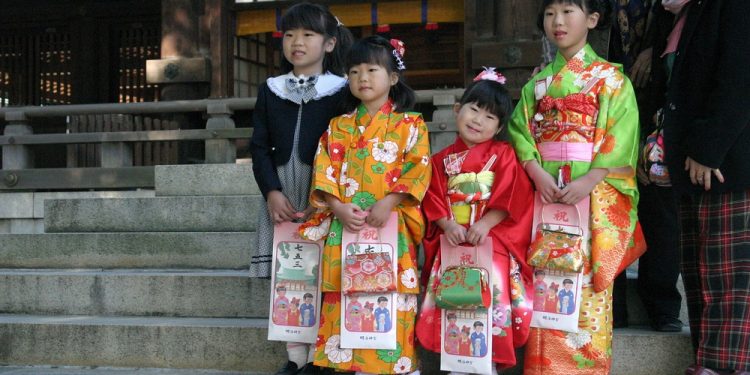
7-5-3 Day
The holiday known as 7-5-3 Day is observed on the 15th of November. It’s also known as Shichi-go-san and is a Japanese festival celebrated for children aged 3, 5, and 7.
On this day, parents take their three and seven-year-old girls or three and five-year-old boys to the local Shinto shrine and pray to Ujigami—the Shinto guardian god of good health. There is also a purification rite and the reciting of a Shinto prayer observed on this day.
The History Of 7-5-3 Day
Shichi-Go-San is believed to have originated among court nobles during the Heian Period—sometime between 794 and 1185. It was a day to celebrate the passage of noble children into middle childhood. Why the ages 3, 5, and 7?
It’s because odd numbers are considered lucky in Asian numerology. This day was also traditionally a day when people celebrated the survival of their children, as historically a large percentage of children did not survive past childhood. As time passed, this tradition spread from the noble classes to the samurai class.
This is when several additional rituals were added to the practice. For example, children were allowed to grow their hair out on this day, and boys would wear the hakama for the first time. Eventually, this tradition was adopted by commoners and became the holiday it is today.
Observing 7-5-3 Day
Aside from purification rites and the reciting of Shinto prayers on this day, there are also a few other traditions. One tradition is to give children “Thousand Year Candy” or Chitose Ame. This is a red and white candy that’s long and thin and symbolizes longevity.
This candy is usually placed into a bag that features a symbol of a turtle and crane—two animals that represent long life in Japan. Before it’s placed in the bag, however, it’s wrapped in an edible rice paper that’s thin and clear.








